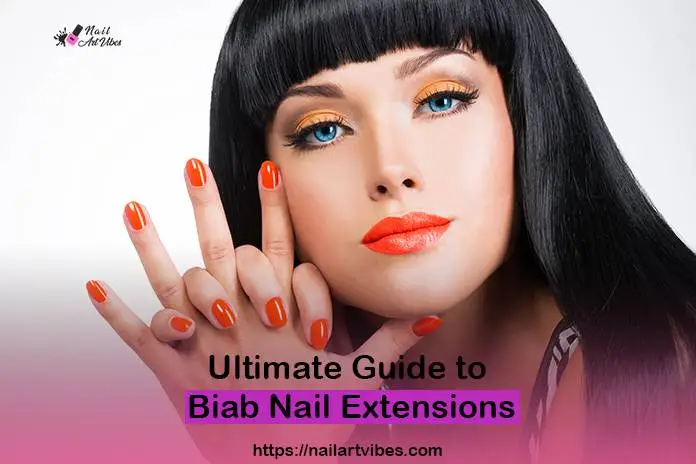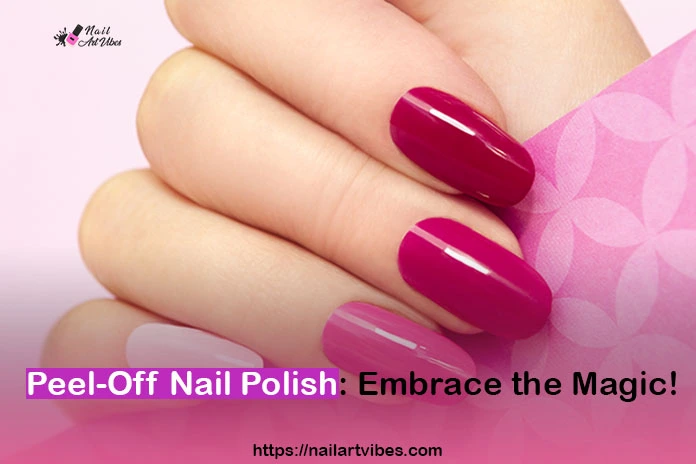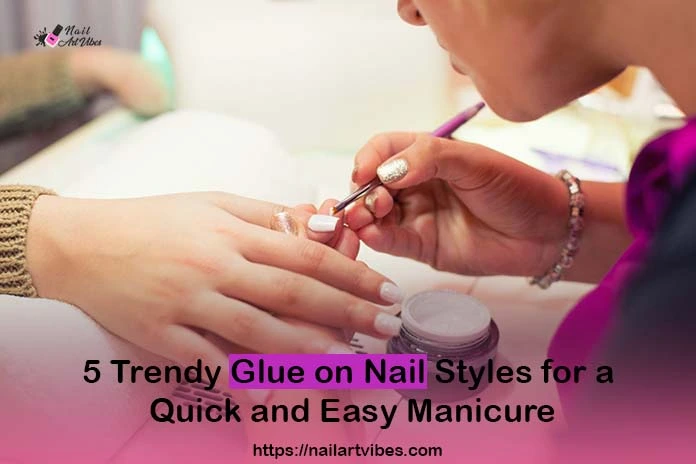Ultimate Guide to Biab Nail Extensions: Nail Tech Advice

Are you a nail geek tired of those chipping and lifting worries? You simply need a flexible option and it will all be solved. BIAB nail extensions will be a treat for you. These are flexible options and are very low-maintenance choices, with these nails on forget about the chipping and lifting of your nails.
The BIAB nails are a more natural and flexible option that makes you feel stunning and worry-free.
1. What is BIAB and Why Should You Use It?
It is, short for “Builder in a Bottle,” a cutting-edge technique that combines the best of both worlds – the flexibility of soft gel nail polish and the strength of acrylics. It’s the perfect solution for individuals who crave stronger nails without sacrificing aesthetics.
This revolutionary hard gel is applied directly to the natural nail or an extension, creating a durable yet flexible layer that provides unmatched support.
Pros:
- Strength and Durability: BIAB manicure offers impressive strength, providing an excellent alternative to traditional acrylics. The gel-based formula creates a sturdy foundation that can withstand daily activities without chipping or breaking easily.
- Healthier Nails: Unlike some other nail extension methods that might weaken the natural nails underneath, BIAB can contribute to the health of your natural nails. The added layer of support can encourage nail growth and prevent breakage.
- Flexibility: These are flexible and stronger with a more natural feel and less prone to cracking and chipping.
- Versatility: BIAB is a versatile option as it has multiple designs to choose from, you can opt for anything you admire.c
- Soak-Off Removal: BIAB nails offer easy removal with a safe method. Unlike acrylic nails, which often require filing and drilling, It can be soaked off using remover without causing significant damage to your nails.
- Reduced Odor: Unlike acrylic application, which can emit strong odors due to the use of liquid monomer, BIAB’s application process is generally more pleasant and less pungent.
Cons:
- Learning Curve: While it is more accessible than some other nail techniques, there’s still a learning curve, especially if you’re new to applying gel-based products. Proper application requires practice and technique refinement.
- Professional Skill: Achieving optimal results with BIAB might be easier when done by a professional nail technician. If you’re not experienced with nail art, seeking a professional’s help could lead to better outcomes.
- Limited Length: BIAB might not provide the same length options as acrylic-, particularly for those who desire extremely long nails. The focus is often on natural and manageable lengths.
- Maintenance Required: Like any nail, it requires regular maintenance in the form of fills. This upkeep is essential to maintain the seamless look and strength of the fake nails.
3. How to Apply BIAB: Step-by-Step Guide
Prep Your Nails
Before diving into the use BIAB application, proper nail preparation is crucial. Start by shaping your nails and pushing back your cuticles gently. Lightly buff the surface of your nails to ensure better adhesion.
Tip: For those looking to give their nails a break, BIAB can also be applied over existing fake nails.
Applying BIAB
- Base Coat: Apply a thin layer of the BIAB gel as a base coat. This initial layer will help create a strong foundation.
- Extension Building: If you’re looking to add length, now’s the time. Apply a thicker layer of BIAB gel to the tips of your nails to create extensions. You can use nail forms or tips to achieve your desired length.
- Structure and Strength: Apply another layer of BIAB gel to provide structure and strength to your Fake nails. Use an orangewood stick to shape the gel before curing.
- Color and Seal: Choose your favorite gel polish color and apply a thin layer over the nails. Cure the gel polish according to the manufacturer’s instructions. Finish with a glossy top coat for added shine.
4. Removing BIAB
One of the most significant advantages of BIAB is its easy removal process. Unlike acrylics which often require filing and drilling, It is a soak-off gel. Here’s how to remove it:
- Gentle Buffing: Use a gentle buffer to break the top layer of the BIAB. It will allow the remover to perform the job more effectively.
- Acetone Soak: Wrap your every fingernail in acetone acetone-soaked cotton piece and then secure it with a piece of aluminum foil.
- Waiting Game: Now wait for almost ten to fifteen minutes. This will allow acetone to work on softening the substance which makes removal easy.
- Gentle Removal: After the soak-off time, gently push off the softened gel using an orangewood stick. Be careful not to force it – if the gel doesn’t come off easily, soak for a bit longer.
Tip: If you’re in a rush, consider using pre-made acetone wraps designed specifically for easy gel removal.
5. BIAB vs. Acrylic: The Showdown
Let’s get to know how BIAB and acrylics are different;
BIAB
- Flexibility: BIAB are more flexible and do not chip and peel most of the time.
- Application: Applied like regular gel polish, It doesn’t require a separate monomer or mixing.
- Removal: Biab is a Soak-off removal recommending technique as it is gentler on nails and doesn’t involve drilling or filing.
Acrylic
- Strength: Acrylic nails are a durable and stronger option than other all extensions.
- Application: In acrylics, a mix of acrylic powder and liquid monomer mix is applied.
- Removal: Often involves filing and drilling, which can lead to weaker nails.
6. Tips for Maintaining Your BIAB Extensions
Follow the tips below and you will get the best out of experience with BIAB extensions:
- Use cuticle oil and moisturizer daily so your nails and cuticles are always hydrated.
- Biab fills are critical to fill the gap between the extension and cuticle. They should be considered every two to three weeks.
- Your nails are not tools! Avoid lifting and opening things using your nails.
- Sunlight exposure can fade away the sine of your nails wear a UV protective top coat when going outdoors.com
Conclusion
BIAB is particularly beneficial for individuals with weak and beaten nails. It adds a layer of strength and support to your natural nails, helping them grow longer and healthier over four weeks.
It’s recommended that you schedule fills every 2-3 weeks as your natural nails grow. This helps maintain the seamless look of your BIAB and ensures that they remain strong and durable.






